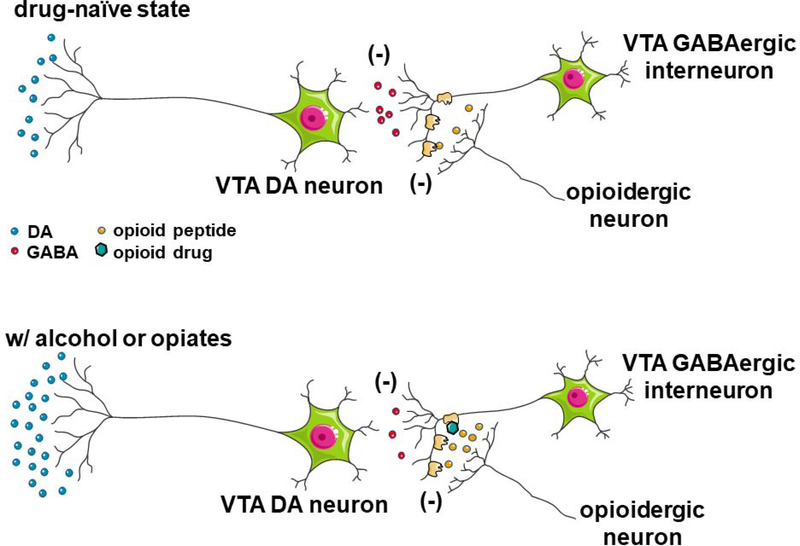Figure 2.
Proposed mechanisms by which alcohol (top) and opioids (bottom) activate the mesolimbic dopamine reward circuits. Dopaminergic neurons in the ventral tegmental area (VTA) are tonically inhibited by local inhibitory GABAergic interneurons. Ingestion of alcohol activates opioid peptide-synthesizing neurons located elsewhere in the brain, such as endorphin-synthesizing neurons in the arcuate nucleus of the hypothalamus. Alcohol-induced release of opioid peptides into the VTA activates inhibitory MORs located on local inhibitory GABAergic interneurons, resulting in disinhibition of dopamine neuron activity. Direct activation of these inhibitory mu opioid receptors by exogenous opioids such as fentanyl or oxycodone also results in decreased activity of local inhibitory GABAergic interneurons, resulting in a similar disinhibition of dopamine neuron activity.

